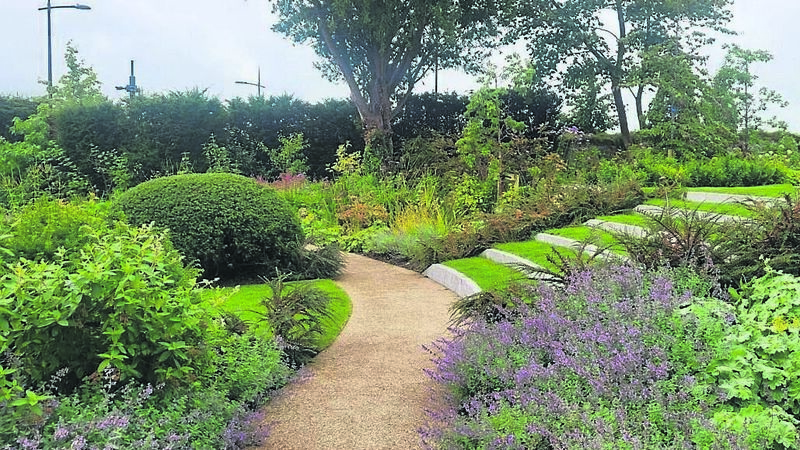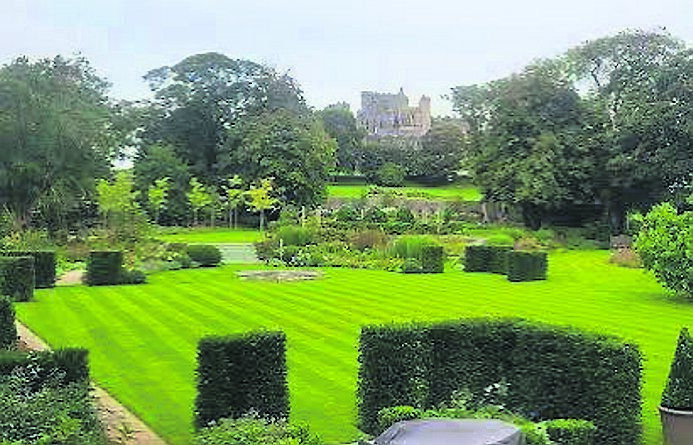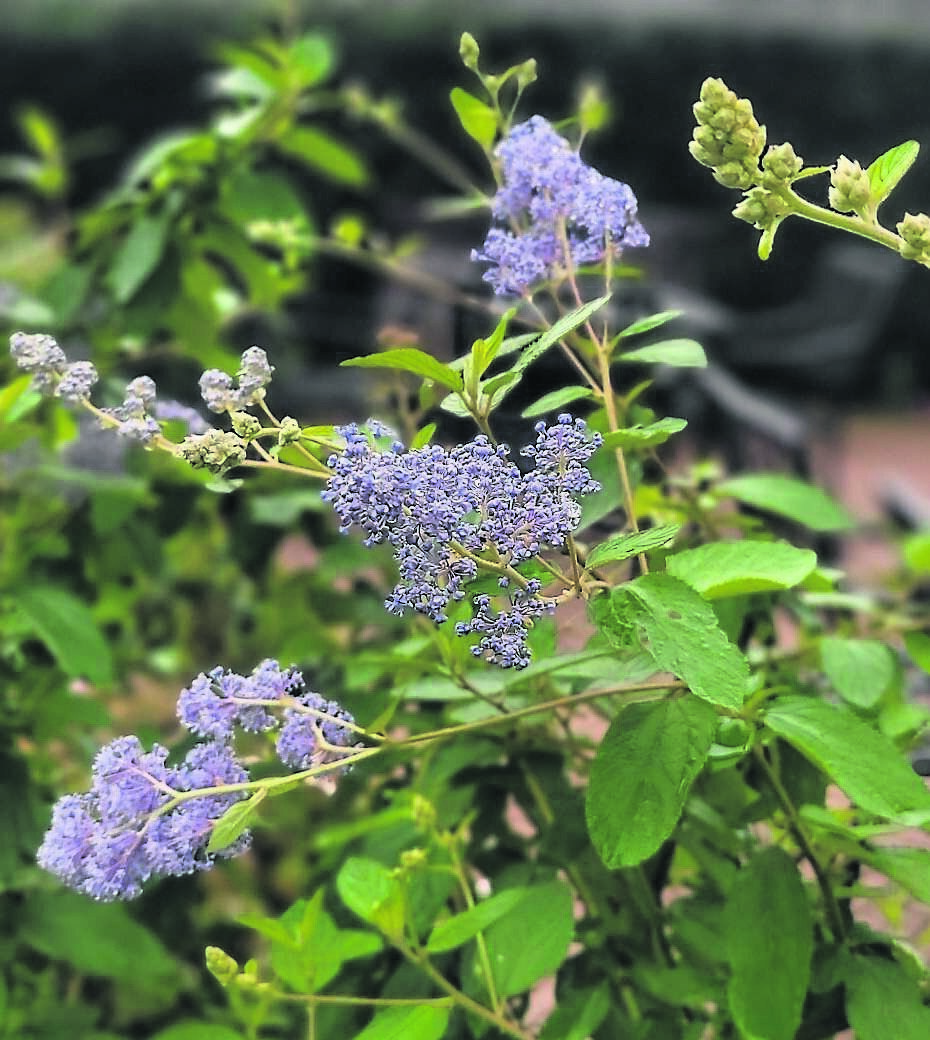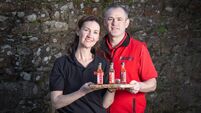One of Munster's finest gardens has links to the 'Black Stuff'

Some beautifully appointed limestone and grass steps leading up through herbaceous, shrub and grass planting, at The Cashel Palace Hotel.
Palace garden with links to ‘Black Stuff’!
I’M continuing my tour of some of Munster’s finest gardens to visit this week, and heading to The Premier County.
The Cashel Palace Hotel in Tipperary officially opened its doors to welcome the public once more on March 1, 2022, after extensive expansion and restoration.
Since then it has received rave reviews about every aspect of the experience that it provides at the heart of the town of Cashel.
This Palladian manor was built in 1732 for the Church of Ireland Archbishop and is situated at the base of the Rock of Cashel. Occupying 25 acres in total, there are some beautiful gardens to explore at the hotel.
The house was originally designed by Sir Edward Lovett Pearce, a renowned architect at the time and also architect of what is now Bank of Ireland on College Green, Dublin.
The gardens as seen today were redesigned by London-based Landscape Architects Del Bueno Gazerwitz and the result is a mixture of mature, formal and soft romantic landscaping that greatly compliments the beautiful newly-restored hotel.
There is lots of formality on the approach to the front of the hotel, with a restrained planting palate. Yew forms crisply clipped hedges as you enter the hotel driveway,with neatly shaped bay and prunus in large planters at the main entrance.
There are many smaller courtyards forming intimate spaces for seating and different functions hosted throughout the year at the hotel.
The planting provides plenty of summer colour as well as foliage interest and some great plant selections to keep us gardeners guessing and inquisitive!
There are many lessons in good screening which we could all use in our own gardens.
Providing some structure in addition to colour is always a good idea, particularly during the winter months, and box balls, evergreen shrubs and trees with interesting bark are all good options and used to good effect here.
Roses, hydrangeas herbaceous geraniums and selective herbaceous perennials all combine to give some great colour throughout the summer and into the autumn. Anemones and sedums were looking particularly good on the day that I visited the garden.

The jewel in the crown is to the rear of the hotel where three beautiful acres awaits exploration en route to the Rock of Cashel along the Bishop;s Walk.
The Bishop’s Walk is an original part of the gardens, the route which many powerful leaders have taken over the centuries to get to the Rock of Cashel.
One of the main features of the garden to the rear is two ancient listed mulberry trees which date back to 1702, when they were planted to commemorate the coronation of Queen Anne of Great Britain.
The trees have collapsed at the centre and are now layering themselves throughout an extensive area of the gardens and producing a good crop of fruit also.
The gardens are enclosed by a historic wall, which gives a great feeling of privacy and containment, and they have provided a unique setting for outdoor weddings since the hotel reopened. It is quite a large area and the design as seen today has referenced the original layout as well as adding new planting.
There are quite a few mature trees - beech, monterey cypress, sycamore, chestnut and birch, all combining to create a mature setting for some of the newer planting.
Wildflower areas create a colourful and romantic feel, as well as providing for insects and birds in part of the gardens.
The hop garden is a circular feature enclosed using ropes for training the hops annually.
The link with the Guinness family and brewing at this location is interesting. Richard Guinness, the father of Arthur, the founder of Guinness Brewery as we know it today, was the land steward for Archbishop Arthur Price. Part of his duties included the brewing of beer for workers on the estate.
Hops grown in the palace gardens and water from a well which was unearthed during the restoration of the Palace was used to brew beer at the palace by Arthur’s father, and it is likely that Arthur’s first introduction to brewing was at the Cashel Palace.
The Archbishop was Arthur Guinness’s godfather and left him £100 in his will, which he used to secure a 9,000-year lease on the St James’ Gate brewery in 1759.
The seeds of the black stuff were sown at Cashel at this time, a great link to an iconic product!
The original well has been restored and covered with thickened glass and forms part of the floor of the The Glass Well dining experience located in Mikey Ryan’s pub next door to the hotel.
There is a real sense of history combined with all of the convenience, comfort and style of the 2st century at the Cashel Palace, a respect for what has gone on here before, and not forgetting how it has informed what is happening here today.
The gardens are open to residents and hotel visitors, for more information about visiting check out www.cashelpalacehotel.ie

Plant of the Week
Wandering through one of the courtyards at the Cashel Palace, a blue flowering shrub caught my eye. Ceanothus delileanus ‘Glorie of Versaille’ was looking great and it was unusual to see a ceanothus flowering so late in the season.
This deciduous shrub produces scented powder blue flowers in late summer into autumn and will get to about 1.5 metres in height and spread if left to grow unpruned.
It is best grown in a sheltered sunny location on a good free-draining soil and best pruned in spring as winter pruning may lead to frost damage.
This is an elegant plant for the garden that will produce scent and attract butterflies too!







 App?
App?


